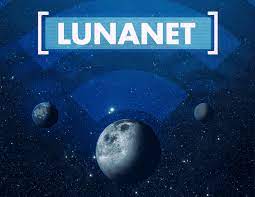NASA is building the internet for the Moon, known as LunaNet, to better communicate with Earth during missions. Data Centre Dynamics (DCD) reported the project would “open up the Moon’s far side, setting the groundwork for human habitation, and preparing us for connected civilizations on Mars.”
NASA Exploration and Space Communications Projects Division Architect David Israel said that during missions, NASA doesn’t have “any relay capability” due to craters and valleys blocking a direct line to Earth. This factor poses a problem if the U.S. wants to explore the far side of the Moon, which never faces Earth.
DCD reported the U.S. needs infrastructure to communicate with people and equipment on the Moon, some 250,000 miles away, because new missions are planned. The Artemis program intends to take the first woman, and the next man to the Moon in 2024. By the end of the decade, NASA hopes to have sustainable operations on the planetary satellite and a manned Moon Base.
Enter LunaNet. “The way to think of LunaNet is to substitute the word Internet for LunaNet, and then that’s the mindset,” said Israel, who heads the project.
How will it work? According to DCD, the plan is to deploy a whole interconnected network of lunar science orbiters, lunar exploration orbiters, lunar surface mobile, and stationary systems. Moon and Earth orbiters will provide relay and GPS-like positioning, navigation, and timing service to lunar systems, lunar ascent and descent vehicles, and associated Earth ground stations and control centers. LunaNet will also rely on a “disruption tolerant networking bundle protocol which uses a store-and-forward mechanism along with automatic retransmission to ensure data makes it to its destination.”
Building the internet on the Moon is no small financial feat, so LunaNet will be expanded modularly, bringing connectivity to areas only as needed, similar to how mobile networks started in urban versus rural areas. “The build-up of LunaNet is very analogous to the build-up of mobile networks and the internet,” said Israel.
Israel hopes the project will expand internationally, creating a larger LunaNet with joint partners. Israel’s vision includes “international partners, commercial partners, NASA operations, European Space Agency operations, etc.” In addition, no one entity owns LunaNet; it currently includes government, commercial and academic entities and could involve individuals in the future.
A complementary program in development on the Moon is Nokia’s Tipping Point, expected to launch a 4G network by the end of 2022, Inside Towers reported. DCD reported that the $14.1 million endeavor would deploy technology similar to Earth to test efficacy on the Moon. The difference is that infrastructure on Earth, like cell towers, stays stationary, while the Moon’s internet tech will be designed for space systems moving at different orbital speeds. Should the Tipping Point 4G test prove successful, it can pave the way for a 5G space network and an expanded LunaNet.
“My goal with LunaNet is that it’ll be just as enabling as the internet was to the Earth,” said Israel. “Once this whole network-based mindset gets into the user side, the people planning the missions, then there’ll be all sorts of new types of missions and applications that just grow out of it.”





Reader Interactions